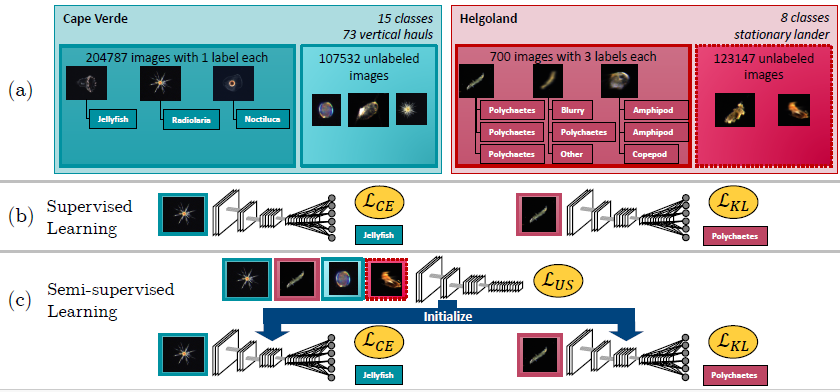
Semi-Supervised Learning for Marine Biology
This is one of the projects I was working on during my PhD at the model-driven machine learning group at the Helmholtz-Zentrum hereon. The goal was to use the hundreds of thousands of images of plankton that were taken underwater by colleagues of the institute to train a neural network to classify the plankton. The problem is that labeled data is hard to get by. Classifying a species of plankton is not as easy as classifying a cat or a dog. It requires a lot of expertise and time. Therefore, we wanted to use the unlabeled data to pre-train the network and then use the labeled data to fine-tune it. This process is called semi-supervised learning.
In the publication we showed how different methods of fine-tuning the network perform. We also showed how we dealt with the highly imbalanced label distribution and how we used Bayes theorem to improve the classification performance.
If you want to know more about the project have a look at the paper.
Schanz, T., Möller, K. O., Rühl, S., & Greenberg, D. S. (2023). Robust detection of marine life with label-free image feature learning and probability calibration. Machine Learning: Science and Technology, 4(3), 035007. https://doi.org/10.1088/2632-2153/ace417
